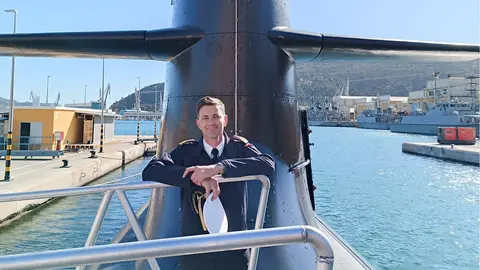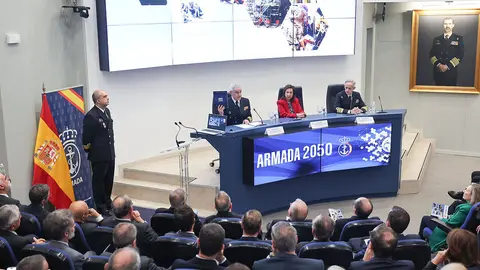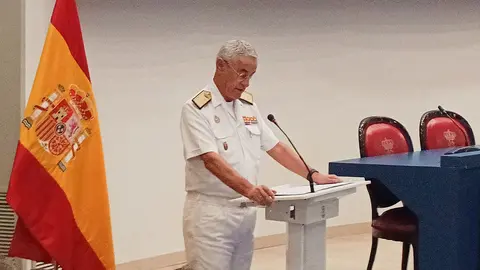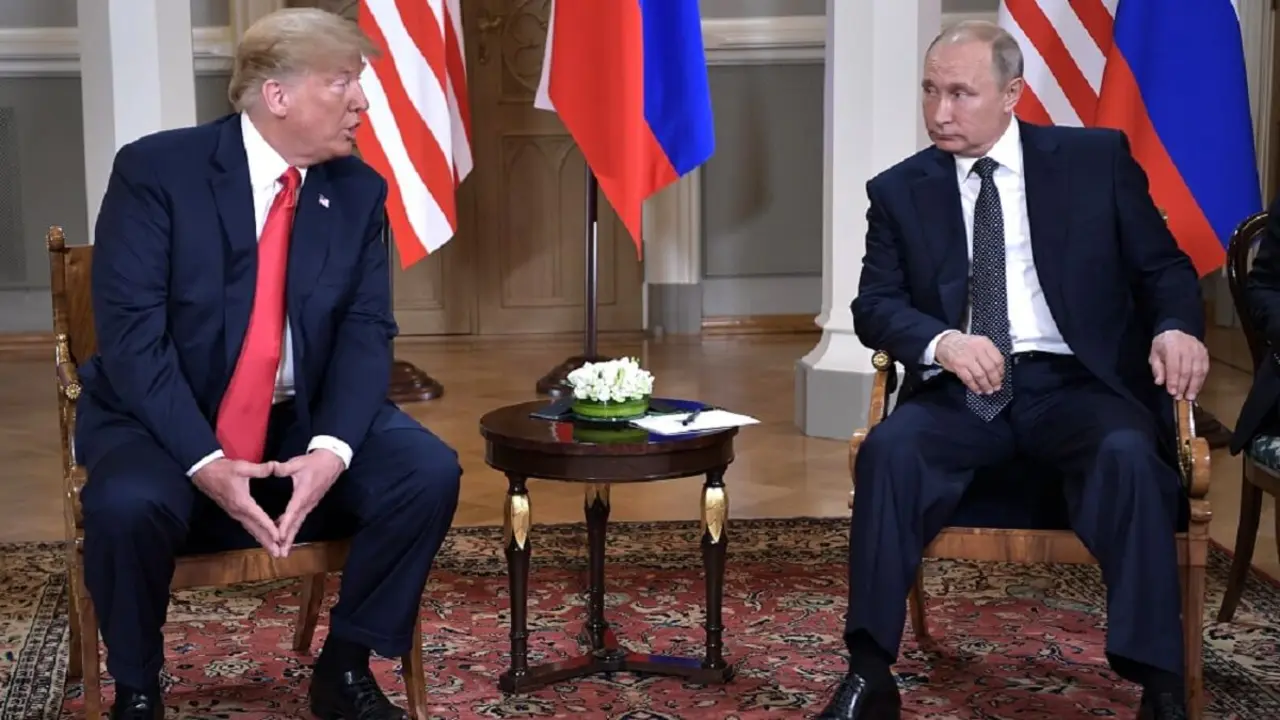Navantia is studying a aircraft carrier for the Navy with the approval of the Moncloa
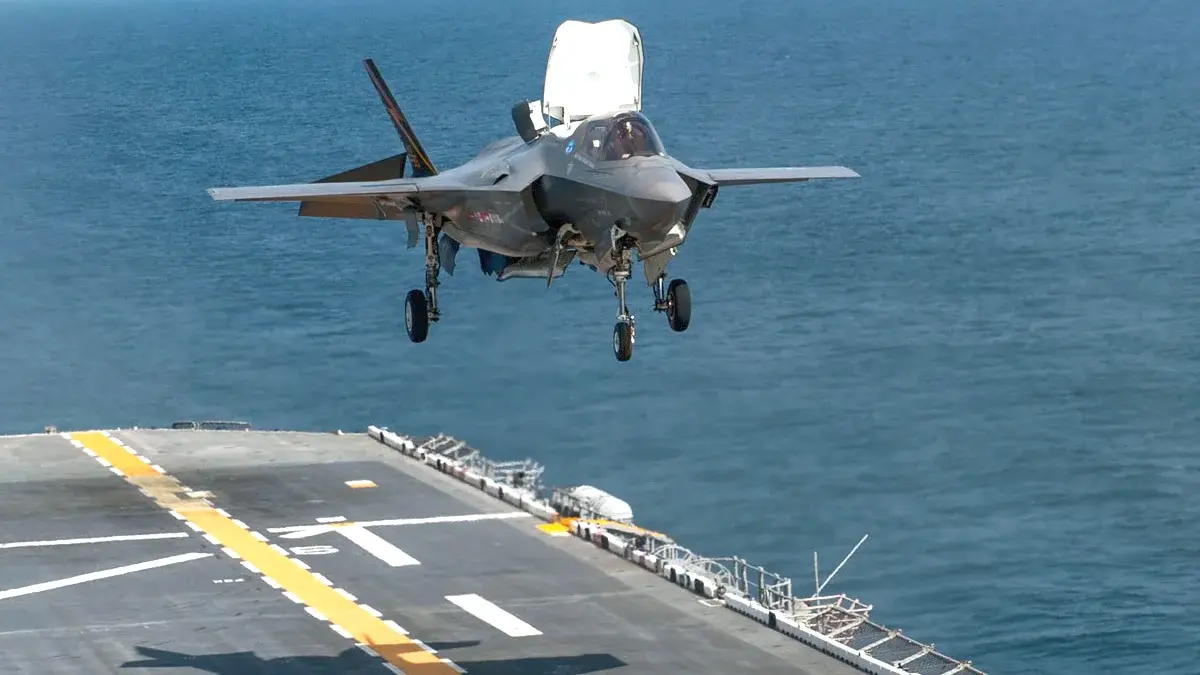
- The French Rafale Marine and the American F-35C are being considered
- Catapult for take-off and braking system, two technological challenges
The Navy has recently commissioned Navantia to carry out a conceptual study focused on determining the technical capabilities of the state-owned shipyard to take on the construction of what would be the Spanish Navy's first ‘full-fledged’ aircraft carrier.
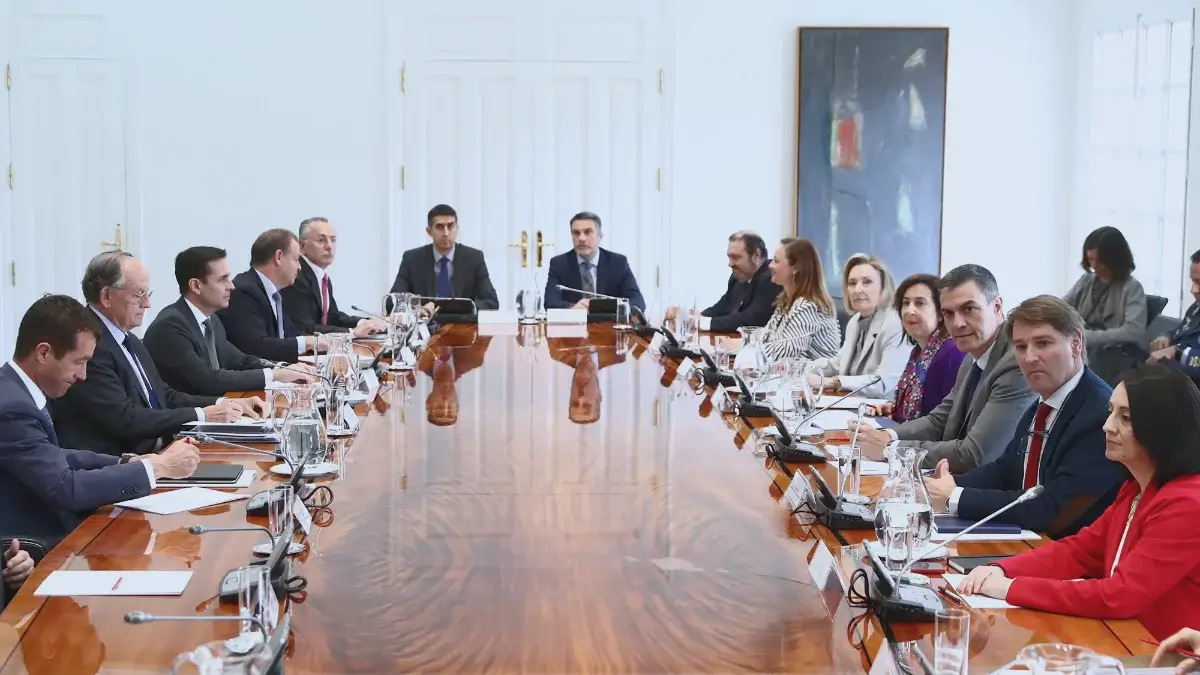
Senior military officials consulted who wish to remain anonymous confirm that, although the Navy has complete independence to commission studies from any company, ‘the initiative has the approval of the Secretary of State for Defence’, Amparo Valcalce, who is responsible for armament policy and industrial innovation. And ‘the approval of the Chief of Defence Staff’, Admiral Teodoro López Calderón, responsible for defining and proposing priorities in the procurement of weapons systems for the Armed Forces.
Given the impact of making the request to Navantia public, the commission also has the authorisation of Minister Margarita Robles, 'who does not take any significant step without receiving the approval of Manuel de la Rocha,' the secretary of state who heads the Office of Economic Affairs of the Presidency of the Government in Moncloa, and who is the all-powerful architect and director of the Industrial and Technological Plan for Security and Defence.
Reliable sources close to the Navy Headquarters broke the news of the aircraft carrier proposal, which came as a surprise to everyone. The Navy, headed by Admiral Antonio Piñeiro, has decided not to play the F-35B card alone – the only vertical take-off and landing combat aircraft on the market – to renew its dwindling fighter and attack squadron, whose Harrier AV-8B+ aircraft have accumulated more than 35 years of service.
The repeated delays by President Sánchez's coalition government in deciding to purchase the fifth-generation F-35B single-seater from the American industrial corporation Lockheed Martin ‘have led the Navy to broaden its range of options in order to maintain the attack and projection capabilities of its Air Force,’ confirm senior military officials.
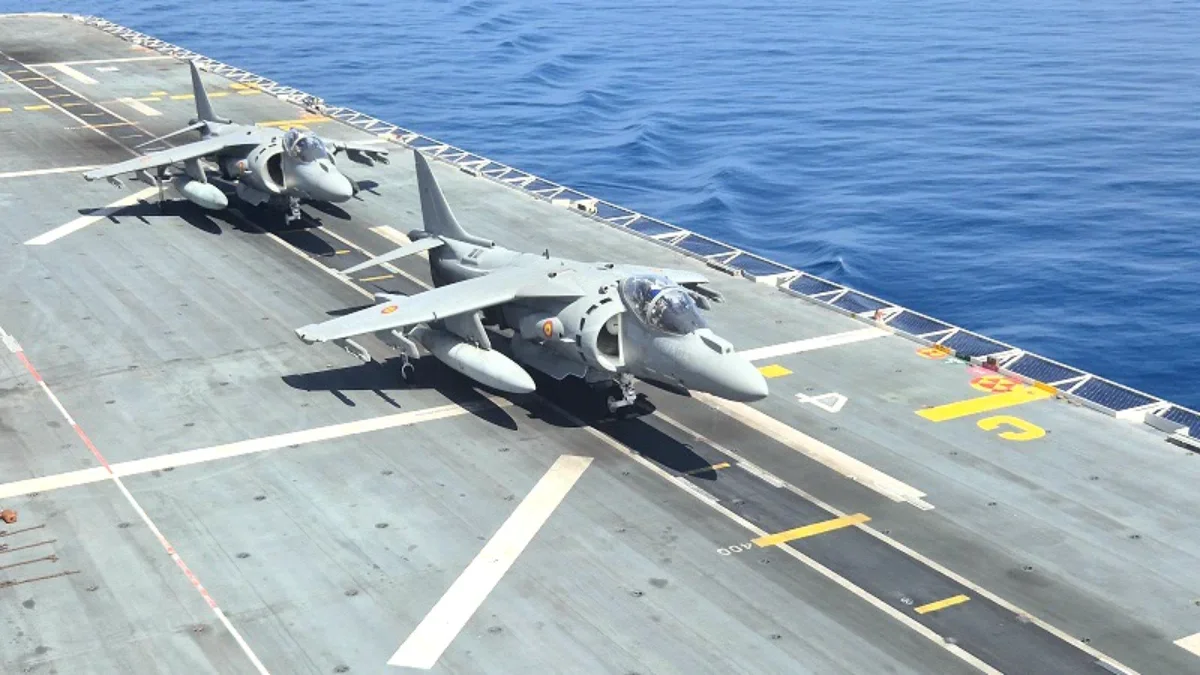
The French Rafale Marine and the American F-35C are being considered
'Opening up the field of possibilities and, if necessary, selecting a conventional take-off and landing naval aircraft would require Spain to acquire a large warship equipped with a long runway capable of launching and recovering aircraft,' says a source familiar with the matter.
This is what is known as an aircraft carrier, equipped with the necessary facilities for the transport, maintenance, operation, take-off and landing of fixed-wing aircraft, complemented on board by helicopters and drones, and whose construction in Navantia shipyards would have to be undertaken in the long term with a multi-million pound budget.
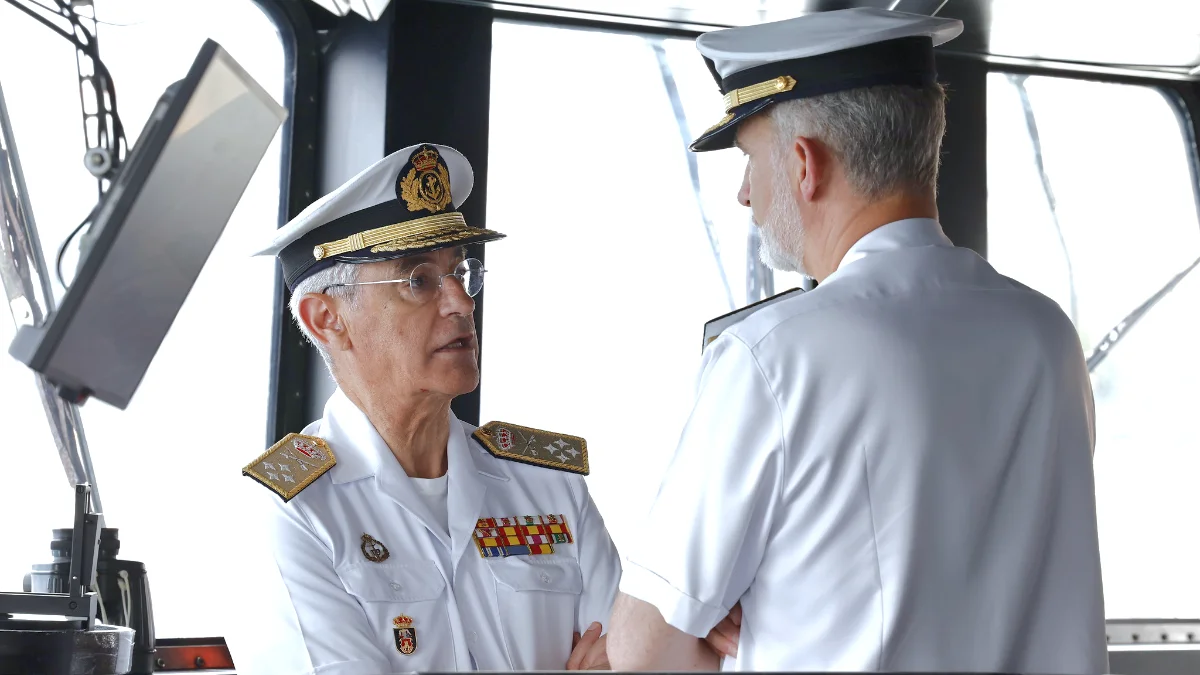
Among the various options being considered by the Navy to arm itself with a combat and attack aircraft adapted to naval conditions is the American F-35C fighter, a version of the F-35 in service with the US Navy and the Marines. Another possibility is the Rafale Marine, the naval variant of the French Rafale fighter, which is deployed on the French nuclear-powered aircraft carrier Charles de Gaulle, which is 260 metres long, has a displacement of 42,500 tonnes and can carry 30 Rafale aircraft, two E-2 Hawkeye early warning aircraft and five helicopters.
The Rafale Marine will enter service in India under Prime Minister Narendra Modi, whose government confirmed last April the purchase of 26 units worth an estimated €7.5 billion. The first Rafale Marines for New Delhi will be delivered from 2028 and will be deployed on its aircraft carrier Vikrant.
The economic and strategic importance of the feasibility study commissioned by the Spanish Navy from Navantia stems from the fact that the fighter aircraft that make up the Navy's 9th Air Force Squadron provide air protection for the Fleet and air support for the Marine Corps. And the Navy is not willing to lose such capability.

Catapult for take-off and braking system, two technological challenges
The flagship and colossus of the Navy is its Vision 2050 initiative, the major overhaul of capabilities proposed by the Navy General Staff under the command of Admiral Piñeiro, whose Planning Division has a Strategic Planning section.
For Navantia, the construction of an aircraft carrier would be ‘a big step and a technological and logistical challenge for its supply chain’, as it lacks solid experience in ships of this type. Among the major challenges that Navantia would have to overcome in order to build an aircraft carrier is the catapult technology, which is responsible for launching the aircraft into the air. Another challenge is the braking mechanism, once the aircraft has landed on the flight deck.
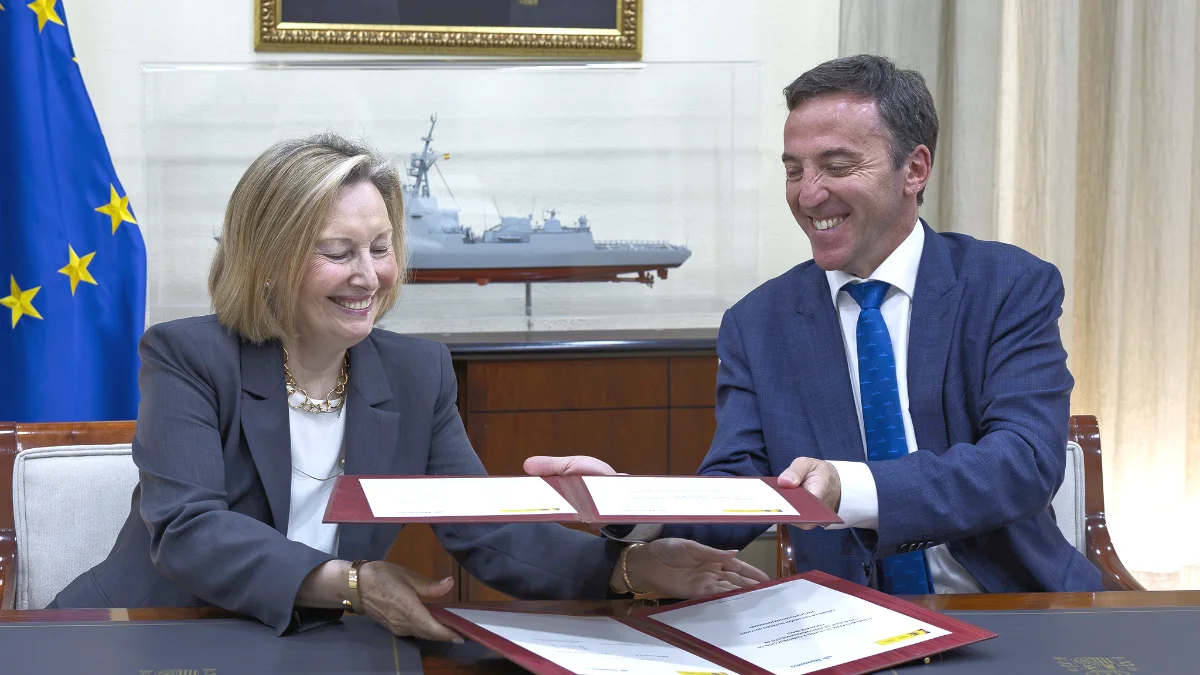
‘These are technologies,’ says a naval weapons engineer, ‘that neither Navantia nor the Spanish defence industry has worked on, because it has not been necessary until now’. Without expertise in these areas, ''the reasonable thing to do would be to look for a technology partner to develop the steam catapults that eject the aircraft. Another option, which is 'the latest and greatest' in aircraft launch technology, is the innovative and complex electromagnetic catapult.
The only aircraft carrier to incorporate them after decades of development is the US nuclear-powered Gerald Ford, in service since July 2017, with a displacement of 100,000 tonnes, a length of 333 metres and the capacity to carry more than 75 fixed-wing and variable-wing aircraft. China is testing a similar system for its Fujian-class aircraft carriers, weighing 85,000 tonnes and measuring 316 metres in length, the first of which was launched in June 2022 and has a capacity for more than 50 aircraft.
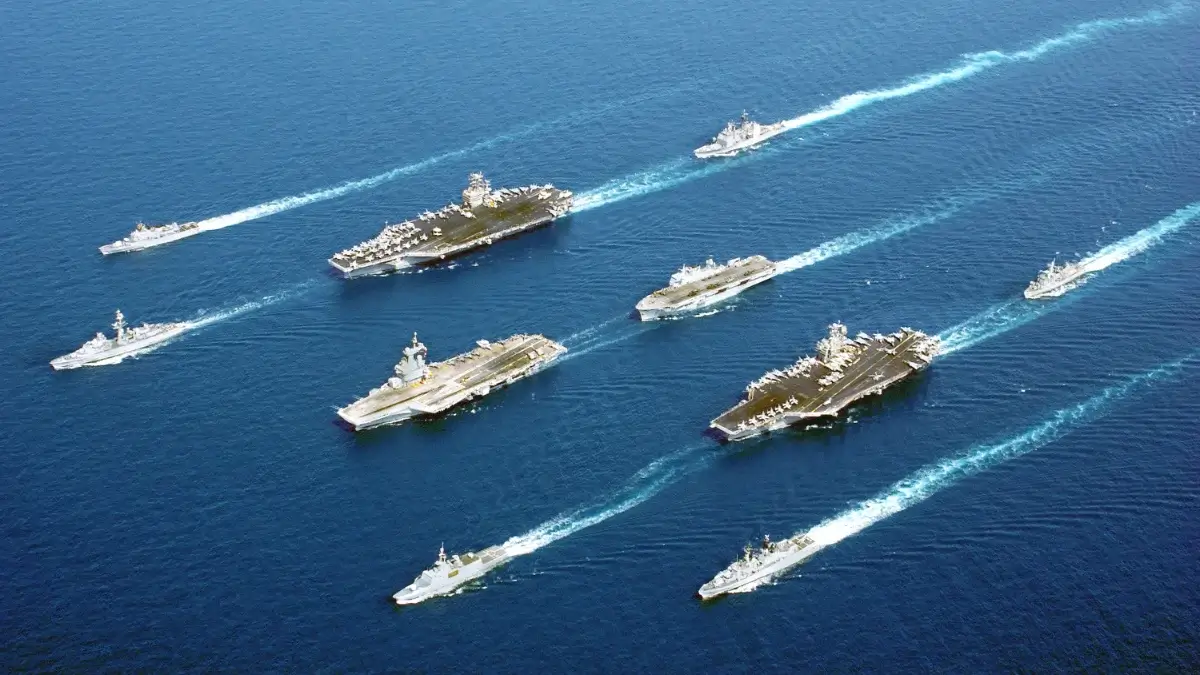
In Europe, the only industrial corporations building aircraft carriers are France's Naval Group and the British Aircraft Carrier Alliance, a company formed through a partnership between BAE Systems, Babcock International, Thales, the Rosyth Dockyard shipyard and the Ministry of Defence in London. They say that paper can bear anything, but the cost of such a project, according to the technicians consulted, is between 5 and 10 billion euros.


